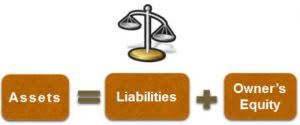
Expenses are a necessary part of running a nonprofit, but you need to ensure they remain low or donors will be less likely to support your organization. But here is a list of tasks that some nonprofits push onto their bookkeepers that are instead the role of an accountant. A crucial responsibility of nonprofit bookkeeping is tracking exactly how money was spent so that your nonprofit can create a functional expense report at the end of each year. Each expense must be recorded in your accounting software and allocated to the correct expense account, like office supplies, rent expense, payroll, etc. Sure, you’ll find overlap between the two roles In many small organizations.
- Many nonprofits attach their financial statements as appendices to their annual reports so supporters who want to learn more about their financial situations can easily dig deeper.
- This can be done by creating different accounts or categories in your automated bookkeeping software or using separate folders if you are keeping physical records.
- The right tool can streamline processes, reduce errors, and provide valuable insights into the organization’s financial health.
- Get free guides, articles, tools and calculators to help you navigate the financial side of your business with ease.
- Therefore, a pledge should be recorded as an account receivable upon notice of the donor’s commitment but converted to actual donations only upon receipt of the funds.
- Then, plan out how you’ll spend your income in a way that achieves those goals.
- Nonprofit bookkeeping can take away your time from fundraising, raising awareness, and finding potential partners.
Monthly Financial Reports

When making this decision, be sure to carefully consider your mission’s needs and resources. By understanding the basics of nonprofit accounting, your team will be better equipped to fund its mission and make strategic decisions about your organization’s future. Use the tips above to get started, and don’t hesitate to contact an accountant (like our team at Jitasa!) with any questions or to take your systems to the next level. These categories are based on the Unified Chart of Accounts (UCOA), a standardized COA model that aligns with nonprofit reporting requirements. However, most small to mid-sized organizations find the UCOA too detailed and prefer to use other online templates that they can customize to only include the accounts they need. Nonprofit bookkeepers must create accurate invoices for vendor payments, retail sales if they have a store, membership subscriptions, tuition fees, and more.
Criteria for Selecting Bookkeeping Software
- FreshBooks accounting software accomplishes all of these tasks with ease and is an excellent choice depending on your needs.
- Thus, robust nonprofit accounting not only upholds an organization’s fiscal health but also enhances its reputation and longevity.
- Proper planning facilitates a seamless transition, enabling nonprofits to benefit early from outsourcing.
- We’ve covered briefly the differences between nonprofit and for-profit accounting practices.
- The more transactions your nonprofit makes, the more often you should reconcile your bank statements.
The IRS receives more than 70,000 applications for tax-exempt status every year, so be patient when submitting your application. If you don’t hear back from the IRS within 90 days, call Customer Account Services to check on its status. In this case, you’d probably ask the lawyer what they would charge a client for the same services. If their standard hourly rate is $100/hr, you’d record the three donated hours as an in-kind donation of $300. An in-kind donation or a gift in kind represents a donation of goods or services instead of money for bookkeeping for nonprofits purchasing goods and services.

Monitor Key Performance Indicators
Fund accounting is a system used by non profits to manage and report their financial resources. It ensures that funds are allocated and used according to donor restrictions and organizational purposes, enhancing transparency and compliance. Implementing these best practices will help non profits manage their finances more effectively and focus on their mission. This statement, similar to an income statement in for-profit accounting, shows the organization’s revenues and expenses over a reporting period. Choose software that supports fund accounting, generates Form 990 reports, and integrates with donor management tools. Cloud‑based options like QuickBooks Online Nonprofit or Aplos allow remote access and automatic backups.
- And ensuring that every receipt, bill, check, credit card charge, and bank transfer gets into your system is a core function of nonprofit bookkeeping.
- An annual budget plan represents a roadmap for nonprofits and ensures the organization is on the right track.
- You must also track all invoices and payments paid by your organization.
- This lets you easily predict your cash flow and manage your precious dollars.
- This ensures spending is in alignment with the grant’s purpose and budget.
- Even small financial missteps can have major consequences when an organization operates on public trust and donor confidence.
- Accrual offers a fuller picture and is required once your nonprofit tops $5 million in annual revenue or accepts federal grants.
- When you partner with us, a dedicated service team works with you to immediately modernize and automate your accounting systems.
- An in-kind donation or a gift in kind represents a donation of goods or services instead of money for purchasing goods and services.
- Nonprofits and for-profits alike need to understand their cash flow and provide a statement about how it moves in and out of the organization.
- For instance, nonprofits have no legal ownership interests and they earn their funding from supporters who do not expect a financial return on their investment.
We also manage your payroll, store all your receipts, file 1099s, provide monthly reports, give feedback on processes and procedures, and answer all your questions. And ensuring that every receipt, bill, check, credit card charge, and bank transfer gets into your system is a core function of nonprofit bookkeeping. Bookkeepers lay the foundation for the accounting processes that will follow. They organize the data and ensure accuracy so the accountant can create reliable and timely financial reports.
After all, you need to bring in and properly allocate funding just to keep your organization’s lights on, let alone launch mission-critical programs and projects. QuickBooks is the most well-known accounting software for nonprofits and for-profit organizations. It has a nonprofit software that allows organizations to invoice, track donations, develop reports, and more. While an accountant will interpret financial reports and make informed suggestions for the board, a bookkeeper is responsible for organizing the nonprofit’s data to create these reports. A nonprofit’s statement of cash flow tracks a nonprofit organization’s cash and financial health. This statement contains information on how much cash an organization generates from investing, financing, and operations.
Each funding source comes with its own nonprofit accounting rules and reporting requirements. Following generally accepted accounting principles helps prevent issues with donors and audited financial statements. By maintaining these three focus areas, your nonprofit accounting system helps build donor trust while ensuring compliance with all requirements. This comprehensive approach Cash Flow Management for Small Businesses to donor management through proper nonprofit accounting practices helps create sustainable funding relationships that support your organization’s long-term success. We handle day‑to‑day entries, grant tracking, and Form 990 preparation so you can focus on programs.
Prepare data for the accountant

Wave’s Pro Plan has user permissions and report sharing ideal for teams. Use of ANAFP’s website, resources, publications, tools, materials, and email lists are subject to ANAFP’s Terms of Use and Privacy Policy. For example, if you spent $50,000 on fundraising and brought in $500,000, that’s 10 cents to raise each dollar. Unify your business back office with doola—an all-in-one platform that handles LLC Formation, Bookkeeping, Taxes, and E-commerce Analytics.

This information allows for informed decisions, goal setting, and identification of areas for improvement. Income accounts should include all sources of revenue for the organization, such as donations, grants, fundraising events, and program fees. Expenses should be categorized as salaries and wages, office supplies, rent or mortgage ledger account payments, utilities, and other operating expenses. Donors often request access to a nonprofit’s financial statements before making donations or grants.